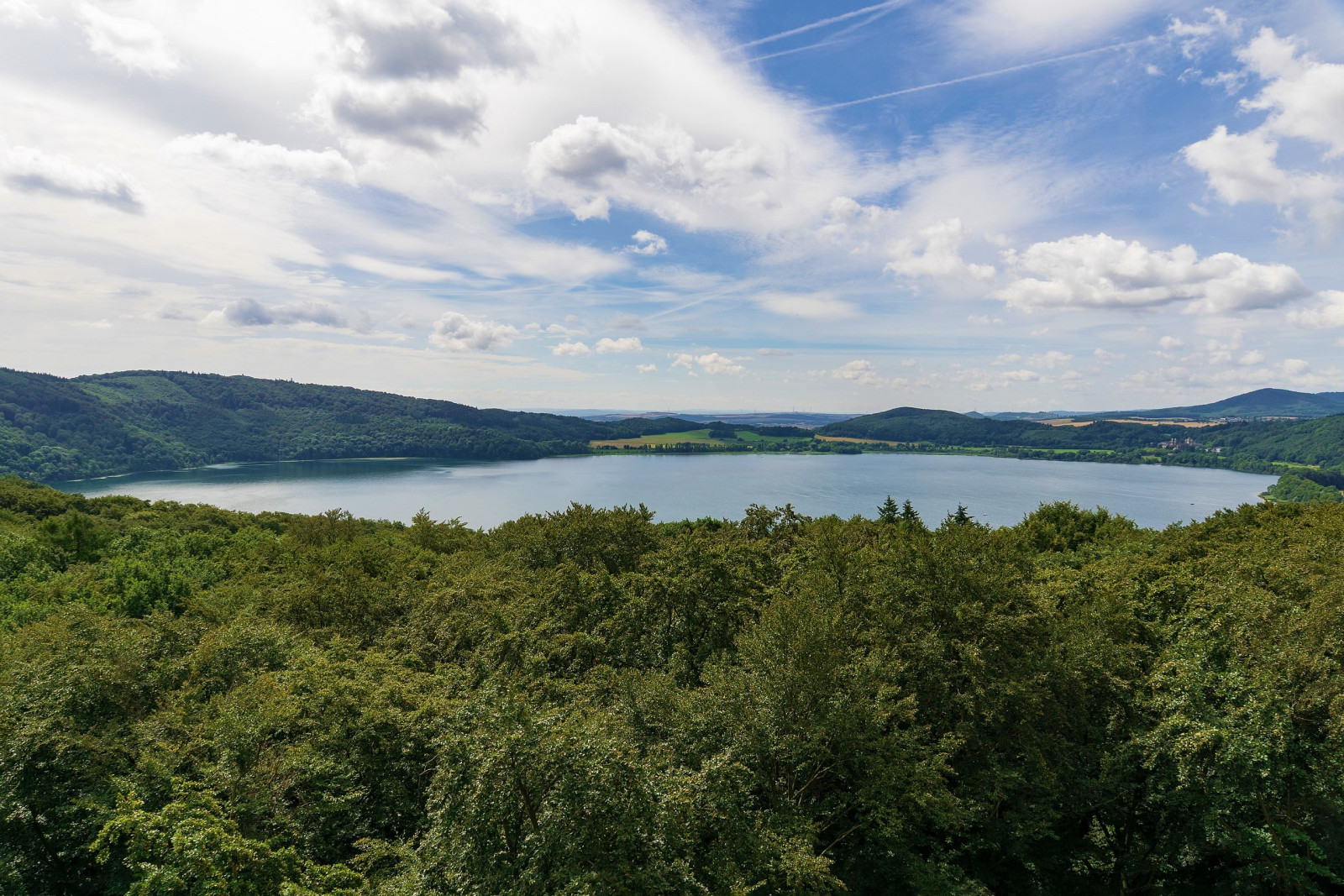Opis
The Laacher See (also known as Lake Laach) is a volcanic caldera lake with a diameter of 2 km. It is in the Eifel mountain range, and is part of the East Eifel volcanic field. The lake has a circumference of approximately 8 kilometers. It is surrounded by beautiful wooded hills. From certain, higher viewpoints, it is a beautiful sight to see the blue crater lake surrounded by the high wooded hills. The lake is important as a breeding area for waterfowl such as perkoz dwuczuby, perkozek, łyska, trzcinniczek (zwyczajny) and others, as well as a resting and wintering area for water birds, as the lake only freezes completely in extremely harsh winters. In winter often gągoł visits the lake.
Szczegóły
Dostęp
The Laacher See is located about 24 km northwest of Koblenz. Free parking is possible at the parking lot of Walfrieden on the northern side of the lake. Click on the P in the map for directions. From the parking you can make a nice circular walk of 9 km around the lake. There are also various other walking and cycling routes in the area.
Teren i siedlisko
Las , JezioroWarunki
PagórkowatyTrasa dookoła
TakCzy luneta będzie przydatna ?
NieUdany sezon obserwacyjny
Przez cały rokNajlepszy czas na wizytę
WiosnaTrasa
Szeroka ścieżka , Wąski szlakPoziom trudności szlaku pieszego
Średnio wymagający spacerDostępne
PieszoCzatownia/platforma obserwacyjna
NieDodatkowe informacje
Photo Laacher See by René Schröder, CC BY-SA 4.0, https://creativecommons.org/licenses/by-sa/4.0




